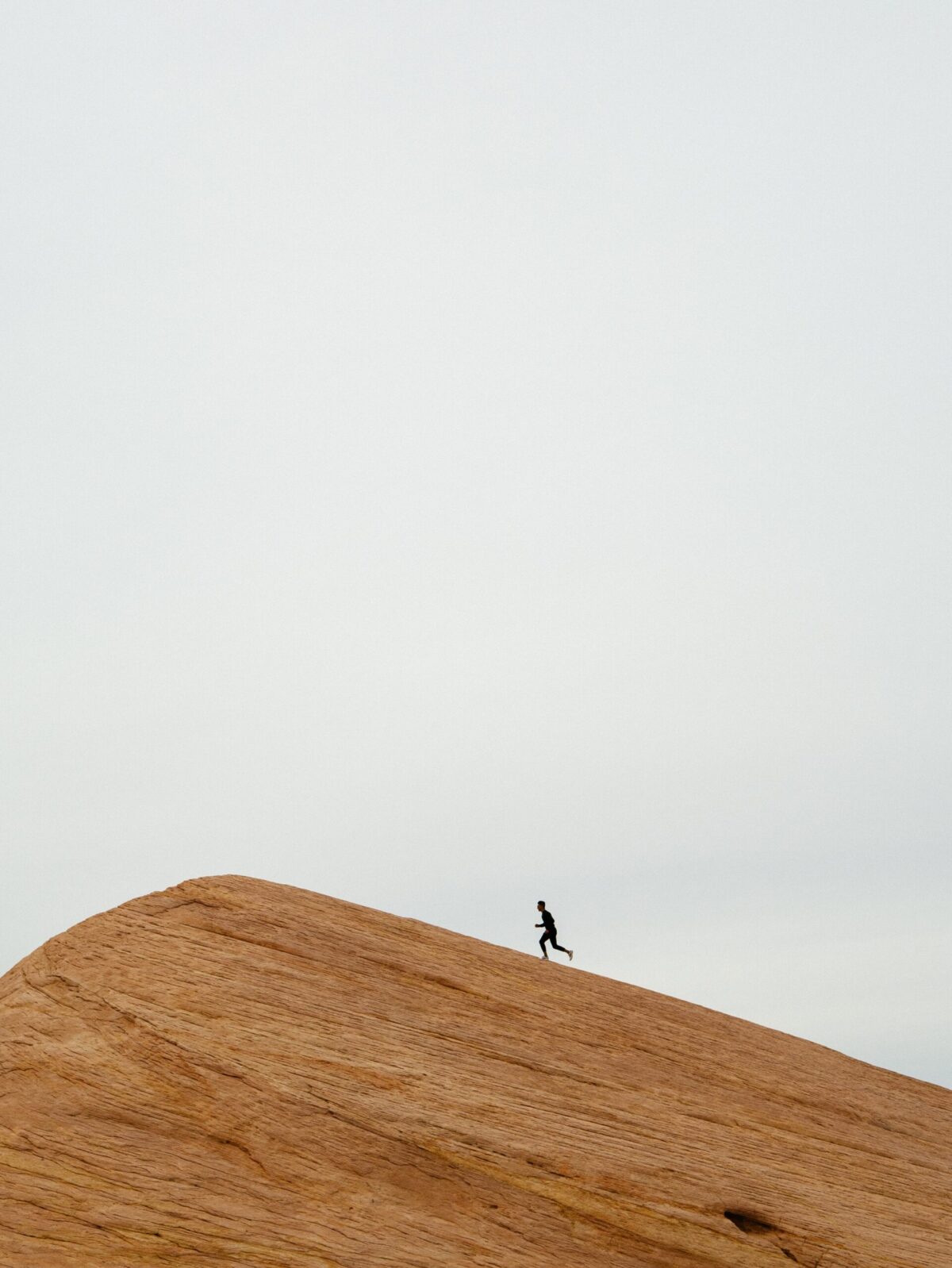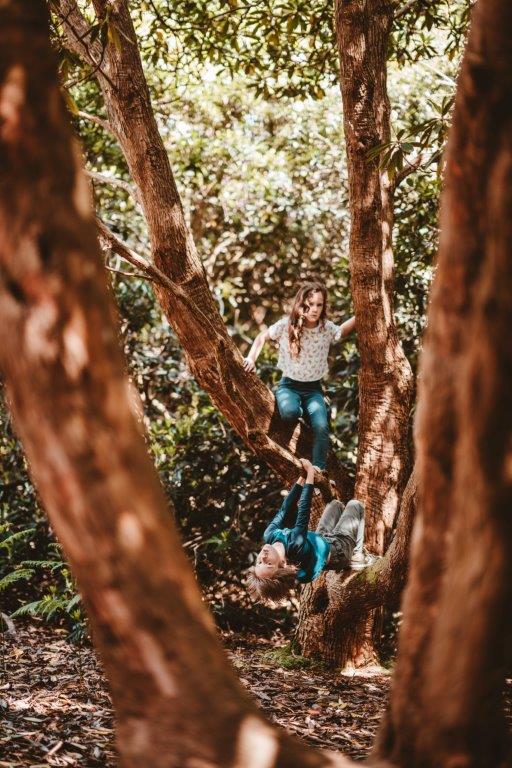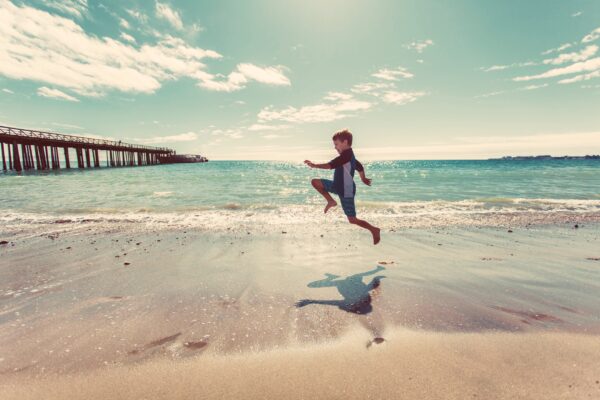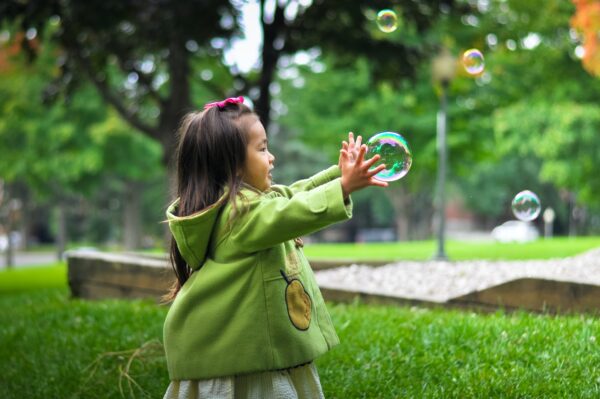Most of us have felt it at some point in our life. The wind streaming past our cheek, the feeling of freedom, the adrenaline that accompanied our headlong rush into the speed of the race. It might have happened when we were four or five, as we screamed in delight as we ran across our lawn, chased by a parent. It might have been at age 18, as I experienced when I ran two miles a day. The experience of running was glorious for many of us, even though it was too often cut short by the duties and complexities of life.
When one works from morning till night and drives home to the duties of family life, it’s quite hard to find the time or desire to put on our running shoes, drive to our running spot, run until we’re exhaustifried, drive home, take a shower (one hopes) and then, perhaps, relax.
Wally Johns would disagree. He’s 71 years old, and he runs three times a week, swims twice a week, and bikes three times a week. He’s training for his next 26.2-mile marathon in Chicago in October, 2021.
Wally has been running for 49 years when he got out of the Navy at age 22. That’s not as long ago as 490 BC when the Greek soldier Pheidippides ran from the Battle of Marathon to Athens to report their victory over the Persians. But it’s still a respectable amount of time, considering the fact that he’s been running ever since.
When he was 26, he impressed his girlfriend, Janet, and astounded her father when he ran seven miles to her house, took a shower, and then escorted her out on a date. Janet’s father watched them go and murmured something like, “Who is this guy?”
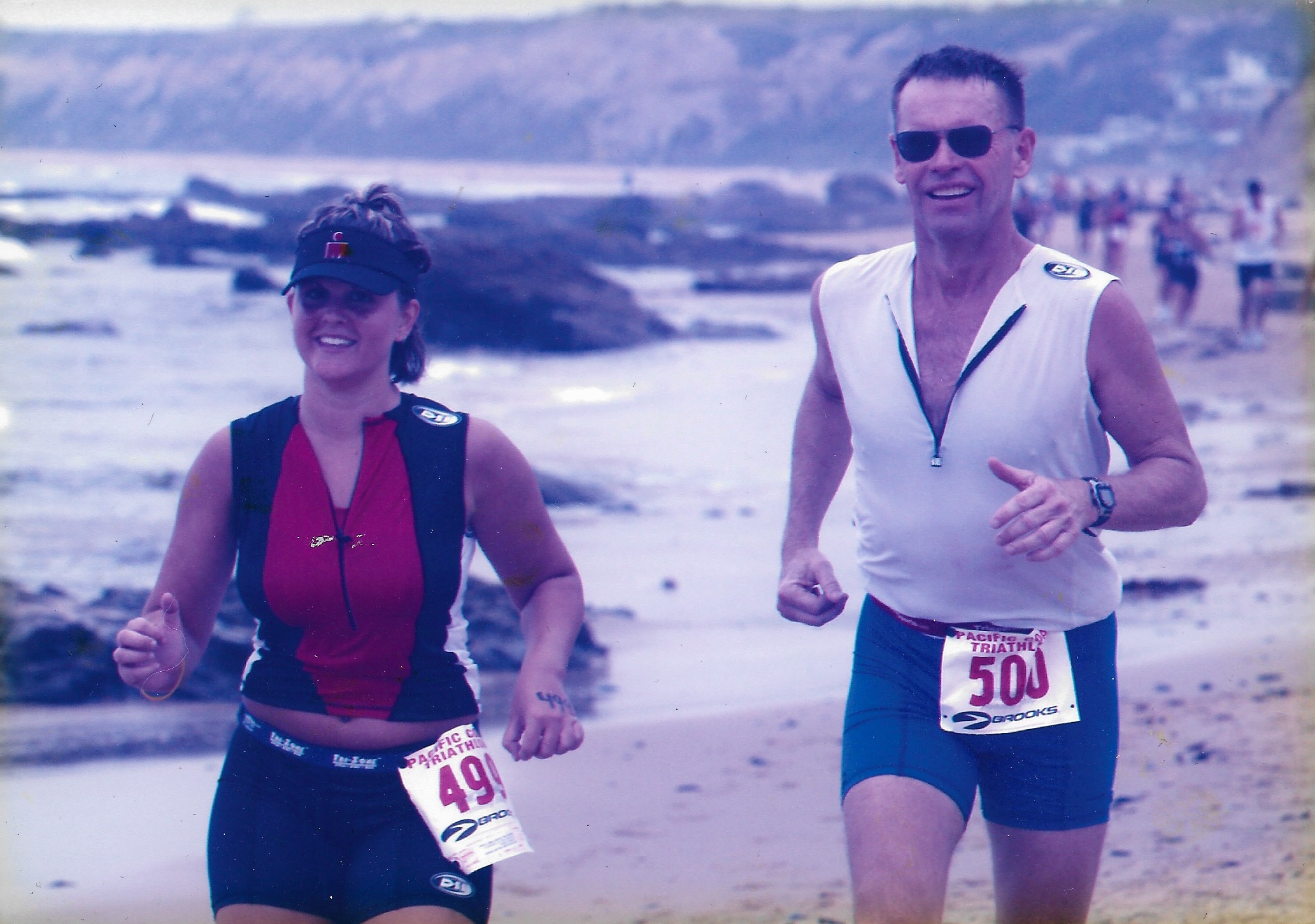
I suppose that if Wally had heard him, he might have grinned and flung an answer over his shoulder that he was just a guy who loved to run. And love to run, he does.
His first formal competition was in 1978, at the Chicago Distance Classic, a 20-kilometer run through downtown. Thousands attended. Wally was 28 years old, and he was hooked. His first triathlon was in 1984, and he discovered that competitively swimming, biking, and running were things that he could do—and do well.
Over the years, he’s run in seven Ironman triathlons. One has to be in shape for those, but Wally has proven, hands-down, that you don’t have to be young to swim 2.4 miles, bike 112 miles, and then run 26.2 miles, in that order, all in less than a day. He ran his last Ironman in 2009 when he was 59 years old.
Never a quitter, he continued running the Ironman 70.3, also known as the Half Ironman, consisting of a 1.2-mile swim, a 56-mile bike ride, and a 13.1-mile run. He won first place in his age group (65 to 69 at the time) in 2015 in the 70.3 Arizona race. He’s won his age group in many local races and qualified to race in the Ironman 70.3 world championship in 2015 in Australia. He also qualified for the International Triathlon Union’s “Sprint World Championship” in 2020 in Edmonton, Canada.
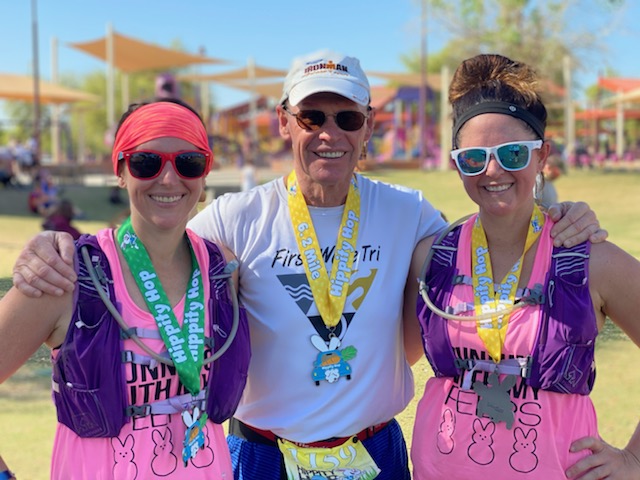
Wally is a perfect example of a person who defeated the “I’m tired after sitting at my desk all day, so, sorry, I can’t run today” syndrome. We won’t discuss my status in that regard. Wally had no time for such non-marathony excuses, even though he spent an entire career as a financial analyst, first for Motorola and then for ON Semiconductor.
After peering at numbers all day, he would run. Now retired and living in Arizona, he gets up at 4 a.m. and runs before Arizona’s summer heat takes hold. He’s cheered on by his wife, Janet, also a native of Chicago. When I asked Wally how Janet, who is also active in sports, felt about the time he spent in competition, he passed on her vote of confidence:
I’m proud of Wally doing seven Ironmans. He’s a role model to our daughters to live a healthy lifestyle. Also, it’s better than sitting in a bar.
One really can’t argue with that. How many financial analysts have raised two daughters to compete with their father in triathlons? Wally is training with his 36-year-old daughter, Maryann, to run together in the October marathon in Chicago. He and his eldest daughter, Diana, have also run in a variety of triathlons and running races.
Triathlons haven’t always been easy for Wally. He’s had two foot surgeries and three knee surgeries. But he keeps going. I asked him why, and he said:
First of all, I do it because I like it. I like staying in shape. When we were in Acadia National Park in 2021, I climbed up Beehive, which is a fairly tough hike. You’re pulling yourself up on rungs embedded in the rocks … It’s hard to push yourself if you don’t like it.
I asked him about getting in the fabled “runner’s zone,” and he replied:
The most vivid memory I have of one of those is going for a run in the forest reserves of Chicago. It was snowing, and I was running on the path. I remember running out. And when I was coming back, mine were the only footprints in the snow. I was like, “It was an easy 10 -mile run!” It was like it was nothing. It was totally quiet in the snow.
When I was a teenager, I watched the 1962 movie “The Loneliness of the Long Distance Runner” with Tom Courtenay. I thought perhaps that Wally might have found his running a rather isolated activity, but he stated that his years of running have given him tremendous benefits.
He meets people all the time and belongs to a variety of sports clubs. He’s traveled extensively, competing across the country. He’s healthy, he’s fit, and his confidence that he can be active is solid. He receives tremendous enjoyment from swimming, biking, and running.
Wally Johns is an enduring reminder to Those Who are Sedentary (I won’t mention me) that you don’t have to be young to run.
Peter Falkenberg Brown is a writer, author, and public speaker. One of his recent books is titled “Waking Up Dead and Confused Is a Terrible Thing: Stories of Love, Life, Death, and Redemption.” He hosts a video and podcast channel called “The FalkenBrown Show” at his website peterfalkenbergbrown.com

